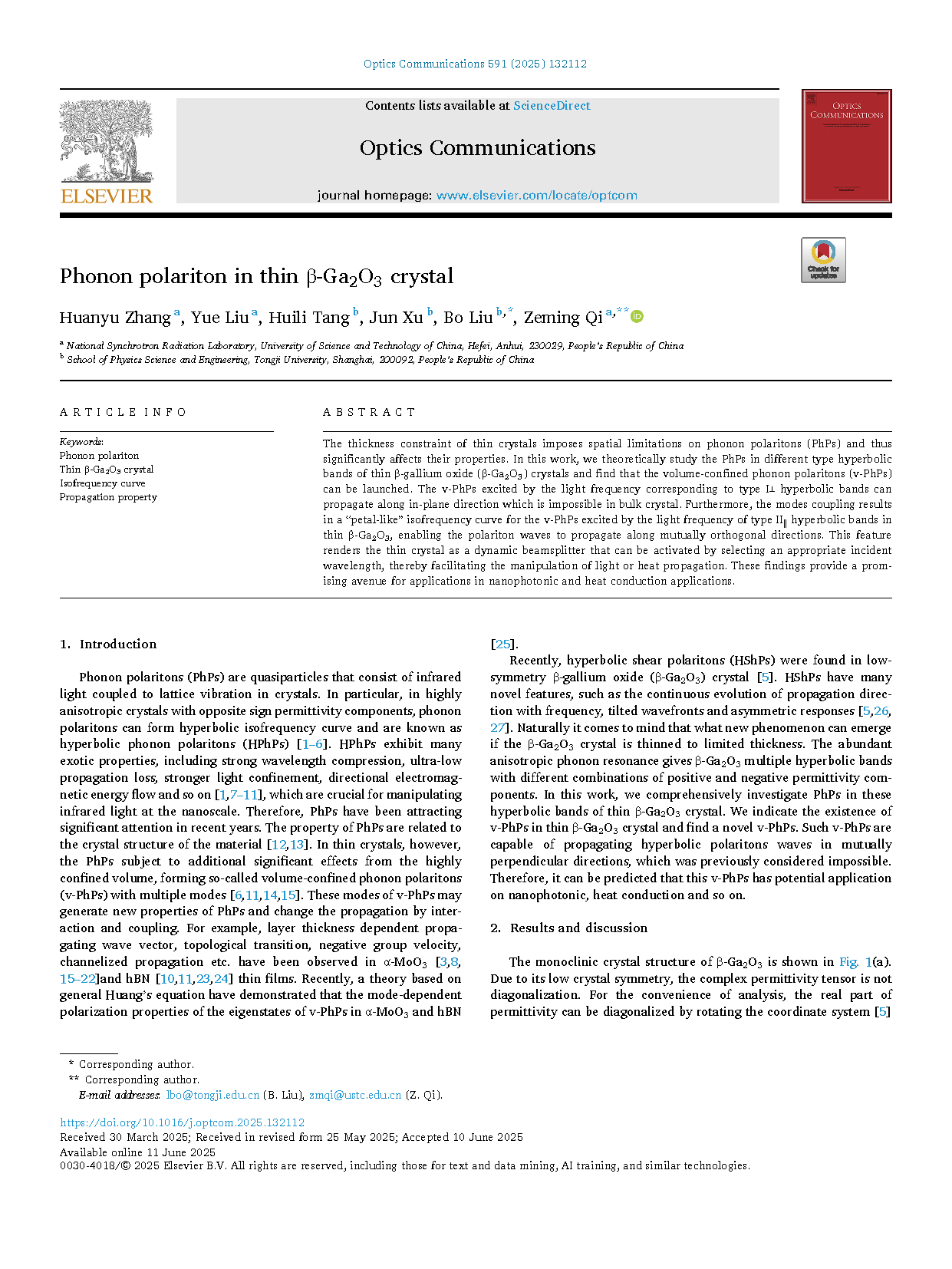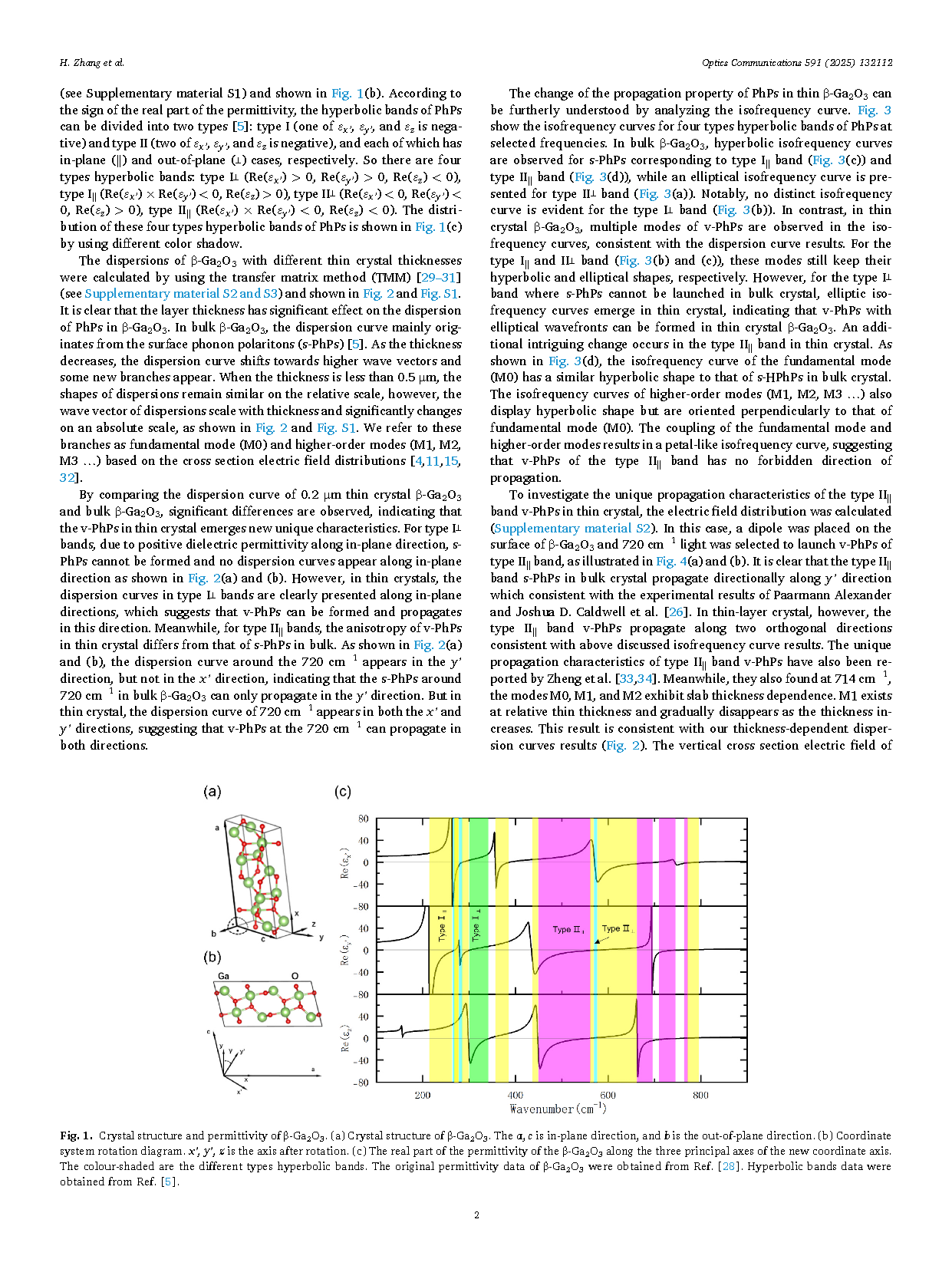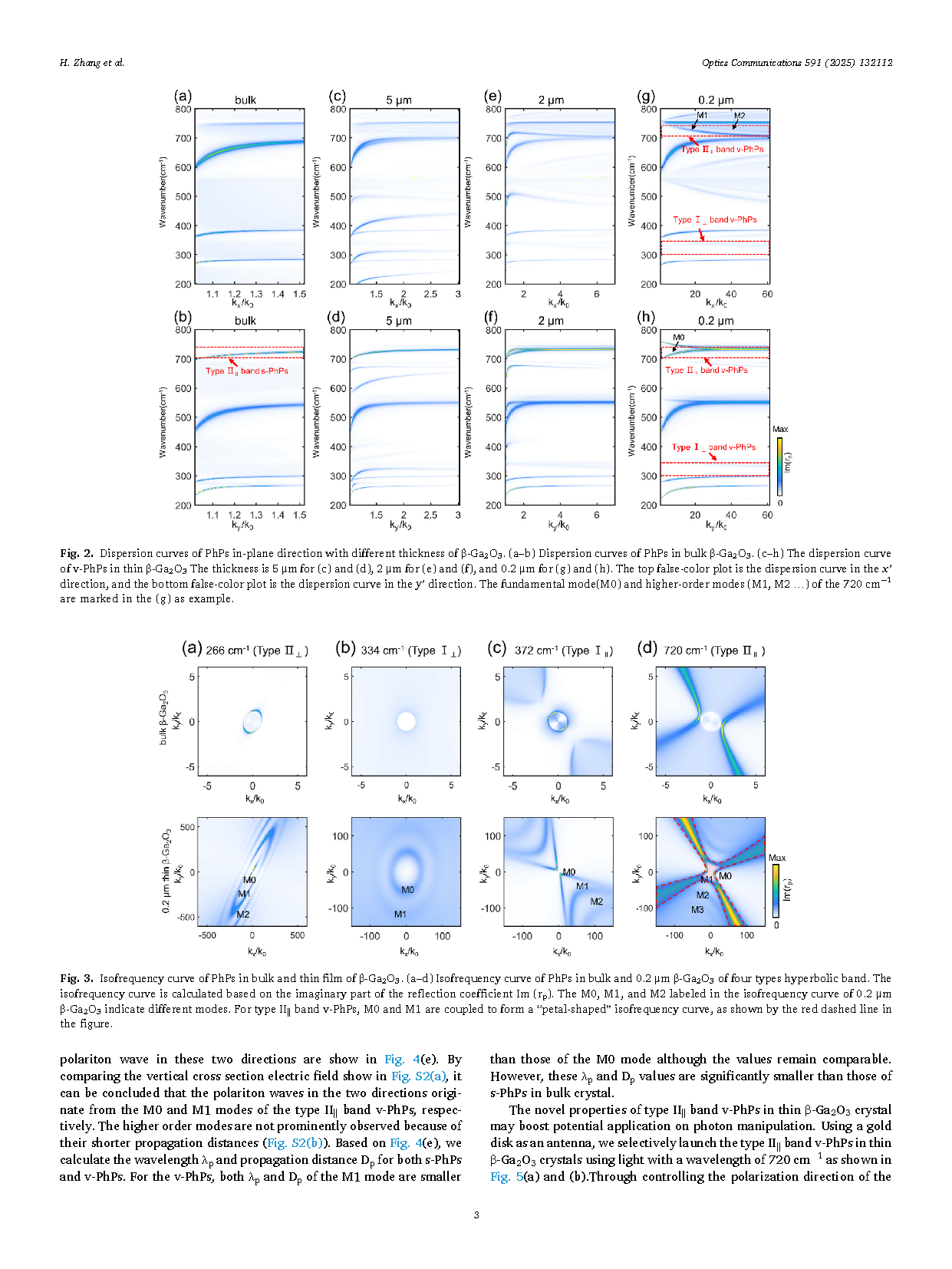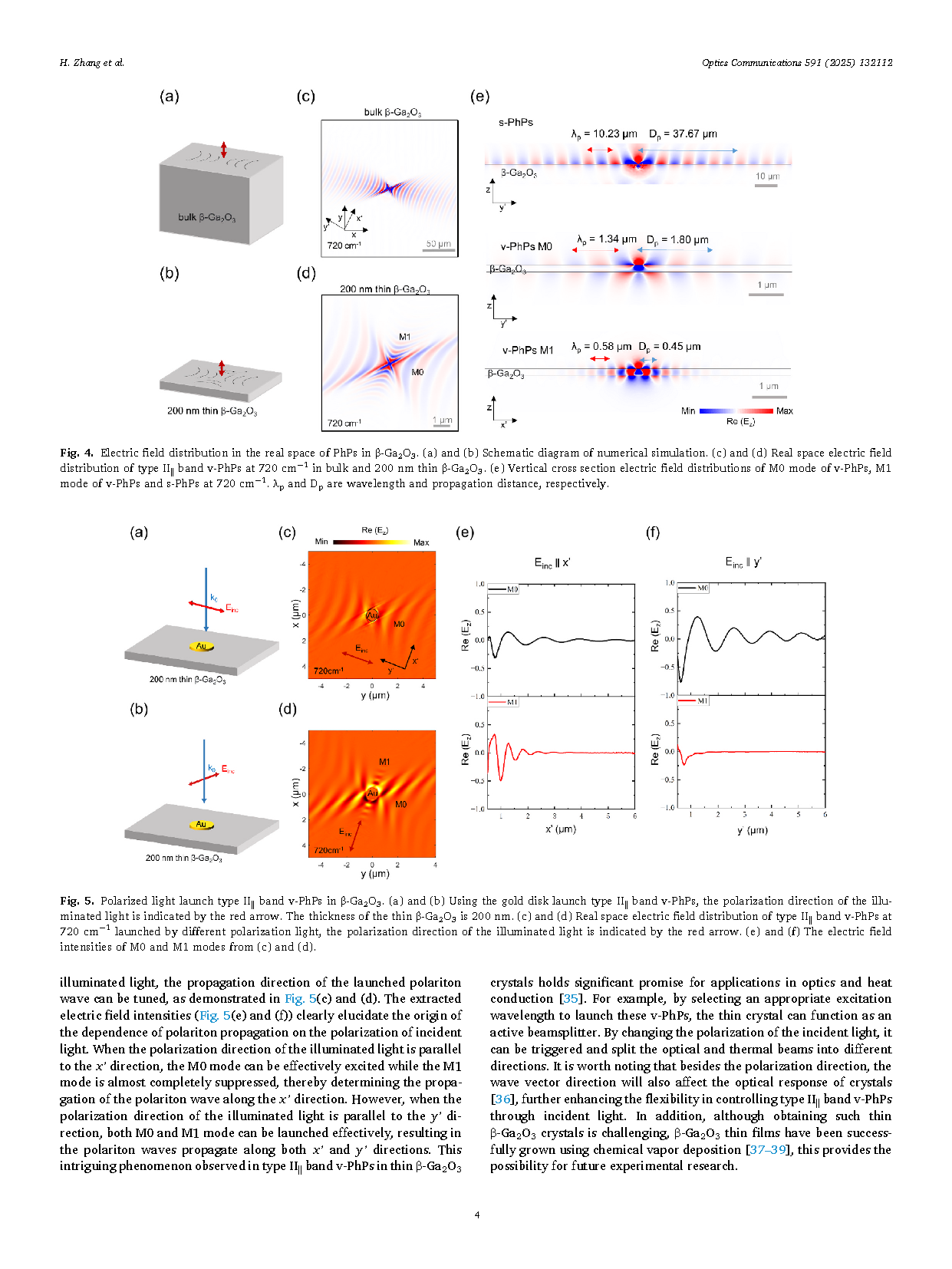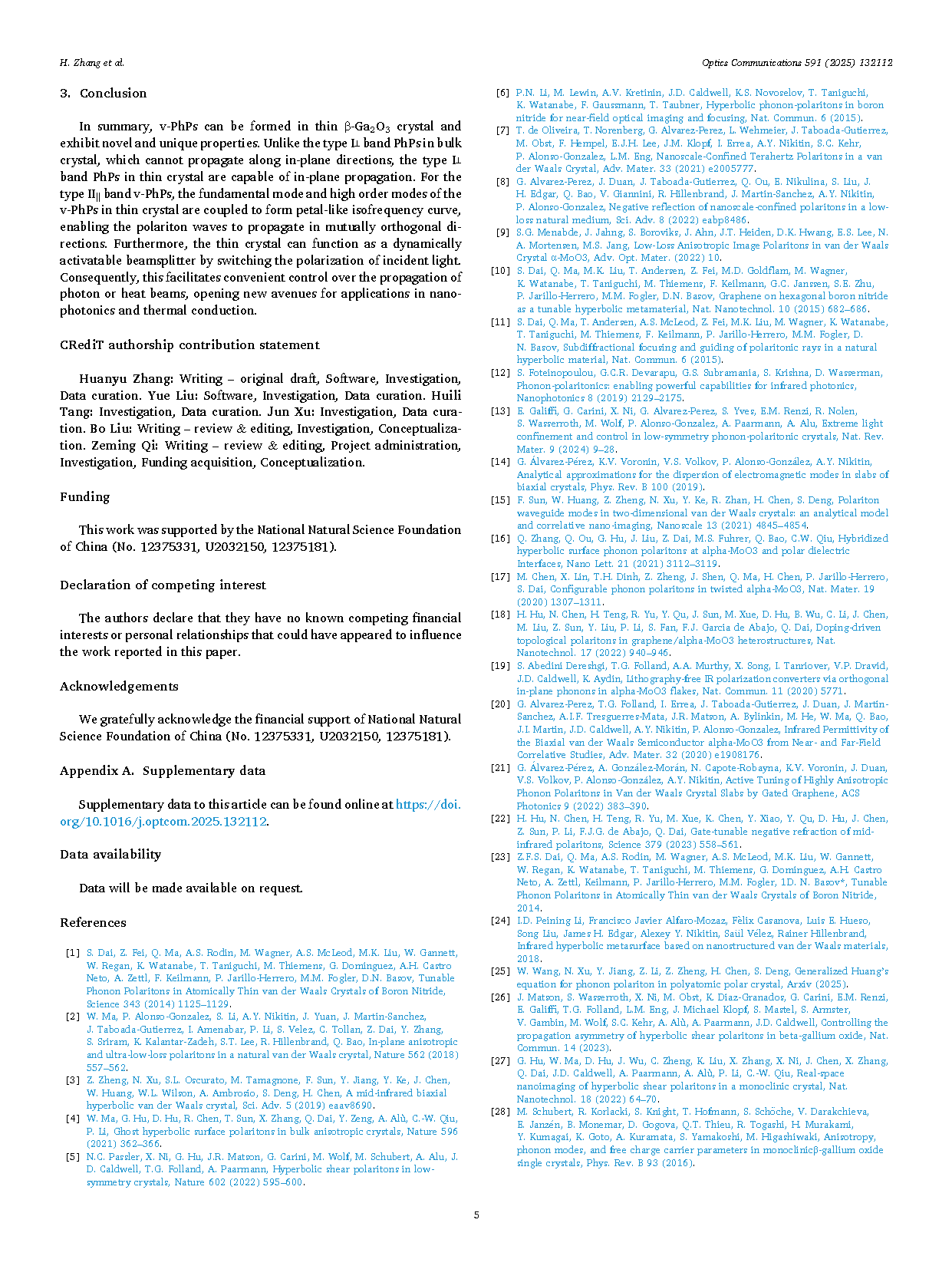
【Member Papers】Phonon polariton in thin β-Ga₂O₃ crystal
日期:2025-07-24阅读:148
Researchers from the University of Science and Technology of China have published a dissertation titled "Phonon polariton in thin β-Ga2O3 crystal" in Optics Communications.
Project Support
This work was supported by the National Natural Science Foundation of China (No. 12375331, U2032150, 12375181).
Background
Phonon polaritons (PhPs) are quasiparticles that consist of infrared light coupled to lattice vibration in crystals. In particular, in highly anisotropic crystals with opposite sign permittivity components, phonon polaritons can form hyperbolic isofrequency curve and are known as hyperbolic phonon polaritons (HPhPs). HPhPs exhibit many exotic properties, including strong wavelength compression, ultra-low propagation loss, stronger light confinement, directional electromagnetic energy flow and so on, which are crucial for manipulating infrared light at the nanoscale. Therefore, PhPs have been attracting significant attention in recent years. The property of PhPs are related to the crystal structure of the material. In thin crystals, however, the PhPs subject to additional significant effects from the highly confined volume, forming so-called volume-confined phonon polaritons (v-PhPs) with multiple modes. These modes of v-PhPs may generate new properties of PhPs and change the propagation by interaction and coupling. For example, layer thickness dependent propagating wave vector, topological transition, negative group velocity, channelized propagation etc. have been observed in α-MoO3 and hBN thin films. Recently, a theory based on general Huang's equation have demonstrated that the mode-dependent polarization properties of the eigenstates of v-PhPs in α-MoO3 and hBN.
Abstract
The thickness constraint of thin crystals imposes spatial limitations on phonon polaritons (PhPs) and thus significantly affects their properties. In this work, we theoretically study the PhPs in different type hyperbolic bands of thin β-gallium oxide (β-Ga2O3) crystals and find that the volume-confined phonon polaritons (v-PhPs) can be launched. The v-PhPs excited by the light frequency corresponding to type Ⅰ┴ hyperbolic bands can propagate along in-plane direction which is impossible in bulk crystal. Furthermore, the modes coupling results in a “petal-like” isofrequency curve for the v-PhPs excited by the light frequency of type Ⅱ‖ hyperbolic bands in thin β-Ga2O3, enabling the polariton waves to propagate along mutually orthogonal directions. This feature renders the thin crystal as a dynamic beamsplitter that can be activated by selecting an appropriate incident wavelength, thereby facilitating the manipulation of light or heat propagation. These findings provide a promising avenue for applications in nanophotonic and heat conduction applications.
Conclusion
In summary, v-PhPs can be formed in thin β-Ga2O3 crystal and exhibit novel and unique properties. Unlike the type Ⅰ┴ band PhPs in bulk crystal, which cannot propagate along in-plane directions, the type Ⅰ┴ band PhPs in thin crystal are capable of in-plane propagation. For the type II‖ band v-PhPs, the fundamental mode and high order modes of the v-PhPs in thin crystal are coupled to form petal-like isofrequency curve, enabling the polariton waves to propagate in mutually orthogonal directions. Furthermore, the thin crystal can function as a dynamically activatable beamsplitter by switching the polarization of incident light. Consequently, this facilitates convenient control over the propagation of photon or heat beams, opening new avenues for applications in nanophotonics and thermal conduction.
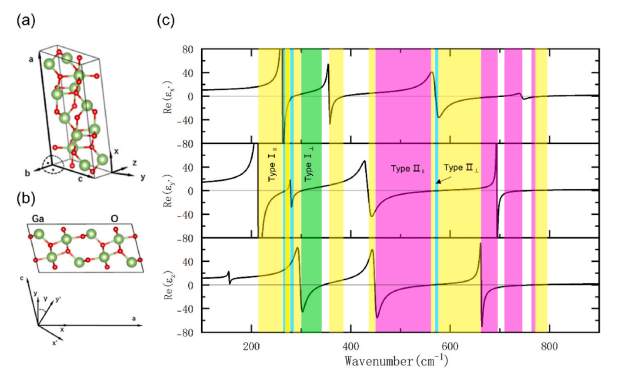
Fig. 1. Crystal structure and permittivity of β-Ga2O3. (a) Crystal structure of β-Ga2O3. The a, c is in-plane direction, and b is the out-of-plane direction. (b) Coordinate system rotation diagram. x’, y’, z is the axis after rotation. (c) The real part of the permittivity of the β-Ga2O3 along the three principal axes of the new coordinate axis. The colour-shaded are the different types hyperbolic bands.
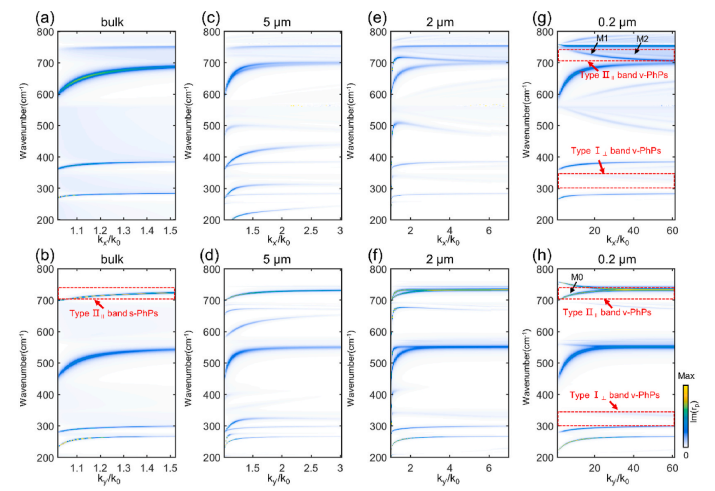
Fig. 2. Dispersion curves of PhPs in-plane direction with different thickness of β-Ga2O3. (a–b) Dispersion curves of PhPs in bulk β-Ga2O3. (c–h) The dispersion curve of v-PhPs in thin β-Ga2O3 The thickness is 5 μm for (c) and (d), 2 μm for (e) and (f), and 0.2 μm for (g) and (h). The top false-color plot is the dispersion curve in the x’ direction, and the bottom false-color plot is the dispersion curve in the y’ direction. The fundamental mode(M0) and higher-order modes (M1, M2 …) of the 720 cm−1 are marked in the (g) as example.
DOI:
doi.org/10.1016/j.optcom.2025.132112
